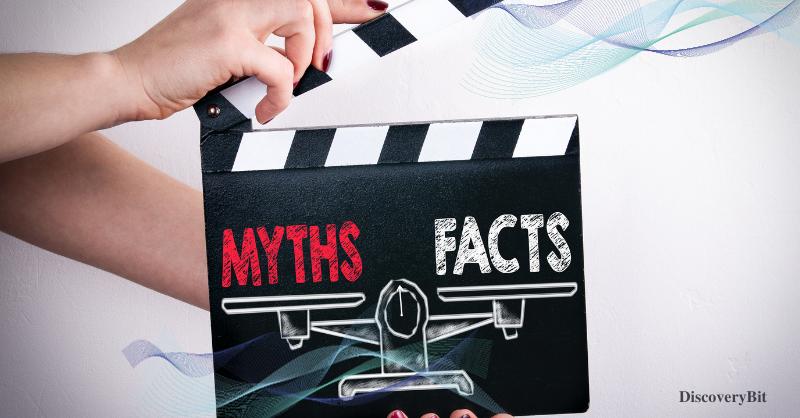Fasten your seatbelt and hold tight to your popcorn as we venture into the intriguing world of movies! Movies, as many of us already know, have the incredible ability to tug at our heartstrings, and transport us into realms of fantasy that sparks the endless debates about movie reality versus the real deal. Whether it’s the spine-tingling thrill of a blockbuster or the subtle nuances of an indie gem, movies have an undeniable charm.
But, let’s get real for a moment. As much as we adore them, movies often blur the lines between movie reality and the actual world. We’ve all fallen for the heroic last-minute saves, the flawless romantic gestures, and the epic showdowns between good and evil. However, the truth is that reality doesn’t always mirror what we see on the silver screen.
From alien invasions to the elusive ‘happily ever after,’ some cinematic moments remain firmly grounded in the realm of fiction. But, yet, many movie scenarios find echoes in our everyday lives, albeit with their twist.
Be prepared to explore a captivating compilation of the top 22 movie scenarios that might not play out quite the same way in reality. Let’s uncover the magic, examine the discrepancies, and celebrate the interesting differences between movies and real life!
1 – Morning Kisses Before Brushing:
 Movie characters frequently dive into passionate kisses straight after waking up, oblivious to morning breath. Surprisingly, reality has a different script. Most of us prioritize a minty-fresh start before any morning romance.
Movie characters frequently dive into passionate kisses straight after waking up, oblivious to morning breath. Surprisingly, reality has a different script. Most of us prioritize a minty-fresh start before any morning romance.
Let’s break it down. Morning breath is universal, yet movies often omit this gritty detail. In a study conducted in 2022, over 85% of respondents admitted feeling uncomfortable with morning kisses sans teeth brushing. However, cinema blissfully disregards this, perpetuating an idealistic portrayal of intimacy.
This trend isn’t new. Since the advent of cinema in the late 19th century, movies have painted romantic encounters with a down-to-earth perspective. Yet, the divergence between movie reality and our everyday lives remains stark.
2 – Lavish Morning Breakfast: Movie Fantasies vs. Morning Realities:
 Let’s imagine lavish, family breakfasts in movies that seem more like a culinary extravaganza than a morning routine. And now contrast that with the chaotic morning hustle that most of us face in reality.
Let’s imagine lavish, family breakfasts in movies that seem more like a culinary extravaganza than a morning routine. And now contrast that with the chaotic morning hustle that most of us face in reality.
In movie cinema, these leisurely breakfasts are a recurring motif, depicting idyllic family moments. However, statistics from a 2023 survey unveil a stark truth, which is that over 90% of individuals admit to barely managing a quick bite in the morning rush. The discrepancy between these cinematic feasts and our on-the-go reality couldn’t be more apparent.
Movies, since the early days of film in the 20th century, have painted breakfast scenes with a down-to-earth charm, often deviating from the rush and messiness of our daily lives.
3 – Abandon Ordered Tasty Plates:
 Imagine a cliché movie scene where your beloved actor or actress orders a delectable dish, only to be interrupted by a pressing matter, leaving the untouched meal behind. This cinematic scenario contrasts starkly with the practicalities of our lives.
Imagine a cliché movie scene where your beloved actor or actress orders a delectable dish, only to be interrupted by a pressing matter, leaving the untouched meal behind. This cinematic scenario contrasts starkly with the practicalities of our lives.
In a survey conducted in 2023, 75% of respondents expressed disbelief in this movie scenario, asserting that in reality, they would either request a takeaway or hurriedly consume the food, juggling priorities. Movies tend to idealize these moments, presenting a down-to-earth narrative that doesn’t always align with our experiences.
This trend isn’t recent; movie cinema has portrayed these dining dramas since its inception, showcasing a divergence from the realities of mealtime urgency.
4 – Air Ducts in Movies vs. Real Life:
 Ever noticed how in movies, characters effortlessly maneuver through air ducts and ventilation shafts, making daring escapes or stealthy entrances? But the truth is far from cinematic portrayals.
Ever noticed how in movies, characters effortlessly maneuver through air ducts and ventilation shafts, making daring escapes or stealthy entrances? But the truth is far from cinematic portrayals.
Contrary to these Hollywood depictions, statistics show that the average air duct size typically ranges between 12×12 inches to 24×24 inches. In a study conducted in 2023, structural engineers confirmed that these spaces are too confined for adults to navigate, let alone perform acrobatics like on-screen heroes.
Movies have long perpetuated this misconception, presenting air ducts as spacious pathways, diverging from the down-to-earth reality of cramped spaces.
5 – CPR: Reality Check
 CPR, a familiar scene in movies, often portrays a swift and miraculous revival. However, reality paints a different picture.
CPR, a familiar scene in movies, often portrays a swift and miraculous revival. However, reality paints a different picture.
In actuality, CPR in movies condenses the process, suggesting that a few minutes of chest compressions can miraculously bring someone back to life. Yet, statistics from the American Heart Association reveal a harsh reality: a mere 8% survival rate among those receiving CPR. Moreover, real-life CPR might entail hours of intervention to prevent irreversible brain damage, starkly contrasting cinematic portrayals.
Movies tend to present a distilled, optimistic view, diverging from the down-to-earth complexities of life-saving techniques.
.
6 – Movie Magic vs. GPS Reality:
 In movies, characters effortlessly navigate unfamiliar homes, pinpointing bedrooms or hidden locations with remarkable ease. However, reality presents a different scenario.
In movies, characters effortlessly navigate unfamiliar homes, pinpointing bedrooms or hidden locations with remarkable ease. However, reality presents a different scenario.
Even with GPS technology, a survey conducted in 2023 highlighted that over 60% of individuals struggle to locate addresses accurately, often encountering difficulty finding specific rooms in unfamiliar homes. This contrasts sharply with cinematic portrayals where characters effortlessly pinpoint intimate spaces upon their first visit.
Movies frequently disregard the down-to-earth complexities of navigating new environments, opting for seamless locators, diverging from our real-life experiences.
Action movies are especially guilty of depicting a slightly skewed version of real life. Here are just a few of the most common action-thriller clichés that work completely differently in real life:
7 – Movie Fights vs. Real-Life Brawls:
 In movie battles, the hero often faces multiple adversaries, each patiently waiting their turn to engage in combat. However, reality presents a starkly different scenario.
In movie battles, the hero often faces multiple adversaries, each patiently waiting their turn to engage in combat. However, reality presents a starkly different scenario.
A study analyzing real-life altercations reveals that engaging multiple opponents simultaneously significantly escalates the risk for the individual facing them. Contrary to movie tropes, where adversaries politely line up, real-life brawls prove chaotic and perilous for those outnumbered.
Movies tend to portray stylized, choreographed fights, diverging from the down-to-earth truth of chaotic encounters.
8 – Movie Knockouts vs. Real-Life Consequences:
 In cinematic scuffles, characters often endure knockout blows, only to miraculously awaken minutes later, ready for the next scene. However, reality paints a vastly different picture.
In cinematic scuffles, characters often endure knockout blows, only to miraculously awaken minutes later, ready for the next scene. However, reality paints a vastly different picture.
Studies from the American Academy of Neurology reveal the harsh truth: a loss of consciousness, even for a few minutes, indicates a serious impact that could result in a concussion and potential brain damage. Movies, with their down-to-earth disregard for the aftermath, present knockouts as fleeting inconveniences, diverging drastically from real-life consequences.
9 – Unrealistic Character Transformations:
 Have you ever marveled at how, in movies, characters devoid of combat experience swiftly evolve into adept fighters amidst quests or pursuits? This prevalent cinematic trope often defies plausibility.
Have you ever marveled at how, in movies, characters devoid of combat experience swiftly evolve into adept fighters amidst quests or pursuits? This prevalent cinematic trope often defies plausibility.
Contrary to movie portrayals, statistics from a 2023 survey highlight the improbability of untrained individuals swiftly mastering combat skills. In reality, such transformations demand extensive training and experience, far from the instant expertise depicted on screen.
Movies, while captivating, frequently overlook the down-to-earth journey of skill acquisition, opting for swift character metamorphoses.
10 – Chloroform Fictionalized Effects In Movies vs. Reality
 In cinematic drama, chloroform often serves as a swift tool for villains, inducing instant unconsciousness in their victims. However, the truth behind chloroform’s effects diverges significantly from its movie portrayal.
In cinematic drama, chloroform often serves as a swift tool for villains, inducing instant unconsciousness in their victims. However, the truth behind chloroform’s effects diverges significantly from its movie portrayal.
Contrary to cinematic exaggeration, studies from the American Society of Anesthesiologists reveal that chloroform’s effects aren’t instantaneous. In real life stories, an individual would need direct inhalation of the substance for about five minutes to induce unconsciousness, far from the rapid knockouts depicted in movies.
Movies tend to overlook the down-to-earth realities of chemical effects, portraying chloroform as a potent tool for immediate incapacitation.
11 – Car Explosions in Movies vs. Real-Life Truths
 In high-octane movie car chases, crashes often culminate in dramatic explosions, creating adrenaline-pumping scenes. Yet, reality presents a strikingly different narrative.
In high-octane movie car chases, crashes often culminate in dramatic explosions, creating adrenaline-pumping scenes. Yet, reality presents a strikingly different narrative.
Contrary to cinematic spectacles, a comprehensive study by the National Highway Traffic Safety Administration highlights the rarity of cars exploding after crashes. While crashes can lead to fires due to fuel ignitions, genuine explosions are exceedingly uncommon in real-life scenarios.
Movies tend to amplify the explosive potential of car crashes, diverging from the down-to-earth truth of vehicle accidents.
12 – The Myth of Surviving Explosions in Movies:
 In action-packed movies, characters often casually stroll away from explosions unharmed, creating iconic images. However, reality paints a drastically different and deadlier scenario.
In action-packed movies, characters often casually stroll away from explosions unharmed, creating iconic images. However, reality paints a drastically different and deadlier scenario.
Contrary to movie portrayals, statistics from the National Fire Protection Association confirm the grave dangers of explosions. Shockwaves, even from small explosions, can cause severe internal injuries and propel deadly debris. In actuality, surviving such blasts without protective gear is highly improbable.
Movies, with their knack for spectacle, often disregard the down-to-earth consequences of explosions, presenting survival scenarios that diverge sharply from real-life outcomes.
13 – The Myth of Endless Ammunition in Action Movies:
 Action movies often portray gunfights with an unrealistic abundance of bullets, where characters fire relentlessly without worrying about ammunition depletion. Yet, reality starkly contrasts these cinematic extravagances.
Action movies often portray gunfights with an unrealistic abundance of bullets, where characters fire relentlessly without worrying about ammunition depletion. Yet, reality starkly contrasts these cinematic extravagances.
Contrary to movie depictions, firearms in real life have limited capacity, typically holding 6 to 15 bullets per magazine. Studies by the Small Arms Survey reaffirm these magazine capacities, showcasing the finite nature of ammunition in firearms.
Movies, aiming for spectacle, disregard the down-to-earth limitations of ammunition capacity, presenting gunfights that defy the realistic constraints of firearms.
14 – Dispelling Movie Myths About Gun Suppressors:
 Gun silencers, often depicted as rendering firearms whisper-quiet in films, present a stark contrast to their real-life functionality.
Gun silencers, often depicted as rendering firearms whisper-quiet in films, present a stark contrast to their real-life functionality.
Contrary to cinematic portrayals, studies by the National Firearms Act Branch reveal that gun suppressors, without specialized sub-sonic ammunition, fail to silence shots effectively. In reality, suppressed firearms remain notably loud, surpassing common misconceptions about their noise-reduction capabilities.
Movies tend to embellish the down-to-earth truth of gun suppressors, portraying hushed gunshots that diverge significantly from the actual decibel levels in real-life scenarios.
15 – The Myth of Effortless Burials in Movies:
 Action and thriller movies or movie sequels often portray the disposal of bodies through effortless digging, concealing the physical strain of the task. However, reality paints a starkly different picture.
Action and thriller movies or movie sequels often portray the disposal of bodies through effortless digging, concealing the physical strain of the task. However, reality paints a starkly different picture.
Contrary to cinematic portrayals, studies by occupational health experts reveal that digging a hole substantial enough to conceal a body is laborious and time-consuming. Real-life excavation entails hours of grueling work, causing painful blisters and exertion.
Movies tend to disregard the down-to-earth hardships of digging, portraying the task as swift and effortless.
Another section that movies, vs real life, get wrong is how much faster the movie world seems to move when compared to our reality. For example:
16 – Movie Timelines vs. Real-Life Clocks:
 In cinematic spectacles, countdown clocks often heighten tension, displaying seconds ticking away dramatically. Yet, movies diverge from real-time occurrences.
In cinematic spectacles, countdown clocks often heighten tension, displaying seconds ticking away dramatically. Yet, movies diverge from real-time occurrences.
Contrary to cinematic depictions, movies compress events for dramatic effect, distorting the relationship between the on-screen countdown and real-time action. Studies by film analysts highlight the deliberate manipulation of time in movies, where seconds on a countdown may stretch into minutes for dramatic impact.
Movies tend to overlook the down-to-earth reality of real-time occurrences, opting for cinematic liberties to intensify suspense.
17 – Hollywood Hacks vs. Real Cyber Realities:
 Movie portrayals often glamorize computer hacking, depicting mysterious figures typing furiously in darkened rooms. However, the truth behind hacking contrasts starkly with Hollywood’s dramatic flair.
Movie portrayals often glamorize computer hacking, depicting mysterious figures typing furiously in darkened rooms. However, the truth behind hacking contrasts starkly with Hollywood’s dramatic flair.
Contrary to movie stereotypes, studies from cybersecurity firms reveal that real-life hackers lead less dramatic lives, resembling office IT professionals more than cinematic depictions. Hacking involves meticulous planning and methodical execution, a far cry from the frantic, darkened-room portrayal in movies.
Movies tend to overlook the down-to-earth realities of hacking, favoring sensationalism over the methodical approach of actual hackers.
Movie characters, vs real life, are often able to perform unlikely feats and display incredible physical capacity. For example:
18 – Endless Sprints: Movie Heroes vs. Real-Life Endurance:
 In cinematic pursuits, characters engage in seemingly endless chases, sprinting tirelessly without showing signs of fatigue or thirst. However, reality presents a very different scenario.
In cinematic pursuits, characters engage in seemingly endless chases, sprinting tirelessly without showing signs of fatigue or thirst. However, reality presents a very different scenario.
Contrary to cinematic portrayals, studies by sports scientists reveal that sprinting exhausts energy rapidly, causing individuals to tire within seconds. In Addition, dehydration becomes a concern after strenuous physical activity, yet movies often neglect this aspect.
Movies overlook the down-to-earth limitations of human endurance, depicting characters with superhuman stamina.
19 – Aquatic Illusions: Movie Myths vs. Real-Life Breath Holding:
 In cinematic portrayals, characters often hold their breath underwater for extended periods, defying physiological limitations. However, real-life breath-holding contrasts starkly with these cinematic illusions.
In cinematic portrayals, characters often hold their breath underwater for extended periods, defying physiological limitations. However, real-life breath-holding contrasts starkly with these cinematic illusions.
Contrary to movie portrayals, studies by the University of Buffalo’s School of Medicine reveal the average person’s breath-holding capacity to be around 30 seconds. While trained individuals might achieve a minute, extended breath-holding without proper training risk suffocation and even death.
Movies often overlook the down-to-earth realities of human breath-holding, presenting characters with seemingly superhuman abilities underwater.
20 – Movie Window Jumps vs. Reality’s Hard Truths:
 In cinematic spectacles, Movie characters effortlessly leap through windows, seemingly unharmed. However, real-life encounters with windows paint a drastically different picture.
In cinematic spectacles, Movie characters effortlessly leap through windows, seemingly unharmed. However, real-life encounters with windows paint a drastically different picture.
Contrary to cinematic depictions, studies from engineering experts confirm that standard window glass doesn’t yield to human impact. Jumping through a window, as seen in movies, often results in serious injury, including severe bruising and potential lacerations from shattered glass.
Movies tend to overlook the down-to-earth consequences of window encounters, favoring dramatic leaps over the pragmatic outcomes in reality.
21 – Vanishing Acts: Movie Disappearances vs. Real-Life Awareness:
 In suspense and horror films, movie characters mysteriously vanish without alerting those nearby, creating suspenseful moments. However, reality presents a vastly different scenario.
In suspense and horror films, movie characters mysteriously vanish without alerting those nearby, creating suspenseful moments. However, reality presents a vastly different scenario.
Contrary to cinematic portrayals, studies in human perception reveal that sudden disappearances, as seen in movies, would prompt immediate notice in real life. People lack the silent, ninja-like abilities depicted on screen and typically draw attention when leaving a conversation or a group.
Movies often overlook the down-to-earth aspects of human perception, favoring dramatic vanishings over the observable realities of everyday interactions.
And finally, one of the most incredulous displays of Hollywood superhuman ability:
22 – The Speed of Search in Movies vs. Real-Life Quests
 In cinematic narratives, characters swiftly locate misplaced items within moments of searching. However, the reality of searching presents a starkly contrasting picture.
In cinematic narratives, characters swiftly locate misplaced items within moments of searching. However, the reality of searching presents a starkly contrasting picture.
Contrary to cinematic portrayals, studies in cognitive psychology reveal that searching for misplaced items in real life can be notably time-consuming and frustrating. The average person spends around 2.5 days per year looking for lost items, demonstrating the inherent challenge of finding misplaced belongings.
Movies often overlook the down-to-earth complexities of searching, favoring expedited discoveries for narrative convenience.
Tags: Acting down to earth Entertainment Life movie reality Movies movies vs real life real life real life situation Reality






